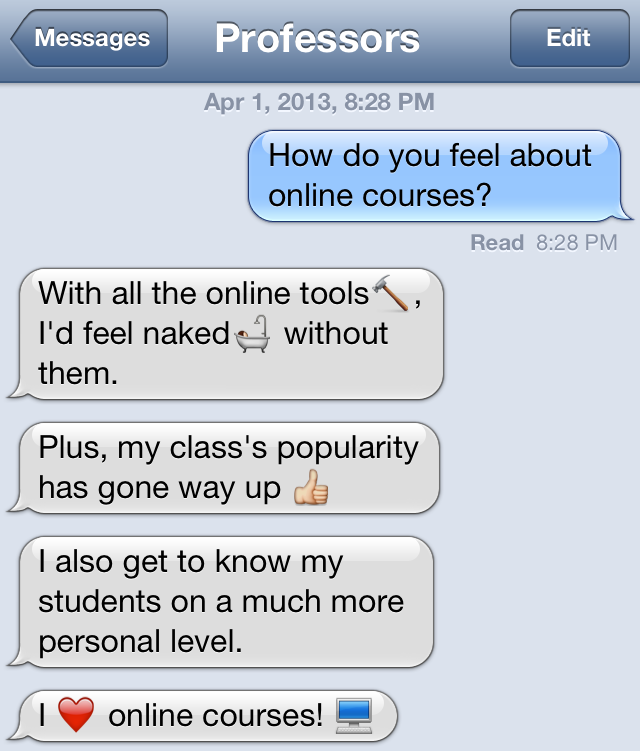By the time you graduate, you probably will have taken at least one online course. Online courses are changing the way students learn, and conversely, the way professors teach.
Contrary to common belief, many professors enjoy working within the online current.
Lavon Page, a mathematics professor, said he enjoys teaching online courses because of the tools he can use.
“When I first started teaching online classes, people asked me if teaching online works as well as teaching in a classroom,” Page said. “Even 15 years ago my stock response was that there is no contest.”
WebAssign and MyMathLab offer methods different from textbooks for students to practice learning material. These programs enable professors to evaluate students’ progress and assess their skills using 21st-century tactics.
“Compared to all the tools I have available to me in online teaching, if you put me in front of a class with only chalk and blackboard, I’d feel naked by comparison,” Page said.
Page said he has not had a problem with enrollment either.
“The popularity of my class went way up as soon as it was converted to an online course making heavy use of WebAssign,” Page said.
Michael Kimberley, a professor of marine, earth and atmospheric sciences, said that after teaching both online and standard classroom courses, he actually had a more personal experience teaching online courses.
“Personally, I feel that my online courses are actually more effective than my on-campus sections because of all the email traffic that I have with my students,” Kimberley said. “I get to know each of my online students in some personal way, whereas there are few students who I get to know personally in a big class in Witherspoon Cinema.”
Due to the structure of online courses, students are forced to establish a network of communication with their professors. Depending on course size, a student may get more or less one-on-one time with their professors.
To ensure students are keeping up with material in an online course, professors can hold them accountable through regular emails.
“For the online class, I require students to email me either every week during the school year, or three times per week for summer-school classes with written evidence they are progressing through the course,” Kimberley said.
Ultimately, the advantages of distance education depend on how comfortable both teachers and students are with it. David Covington, a professor in English, said he has slowly grown fond of the new teaching method.
“As the years have passed, our teachers have grown more and more comfortable with online delivery, and now most of us choose it when we schedule the sections,” Covington said.
Many professors in different departments appreciate the accommodating aspects of online courses as they pertain to their schedules, and the structure of online and traditional courses are more alike than some might expect.
“Teachers in the Professional Writing Program have the same responsibilities teaching online as they do in the classroom. The learning goals for the courses are the same, and the assignments are the same as well,” Covington said.
While responsibilities vary among departments and individual courses, the general principle of teaching remains the same.
“I can’t speak for teachers in other programs, but we have found online courses a very effective way to teach professional writing,” Covington said.








